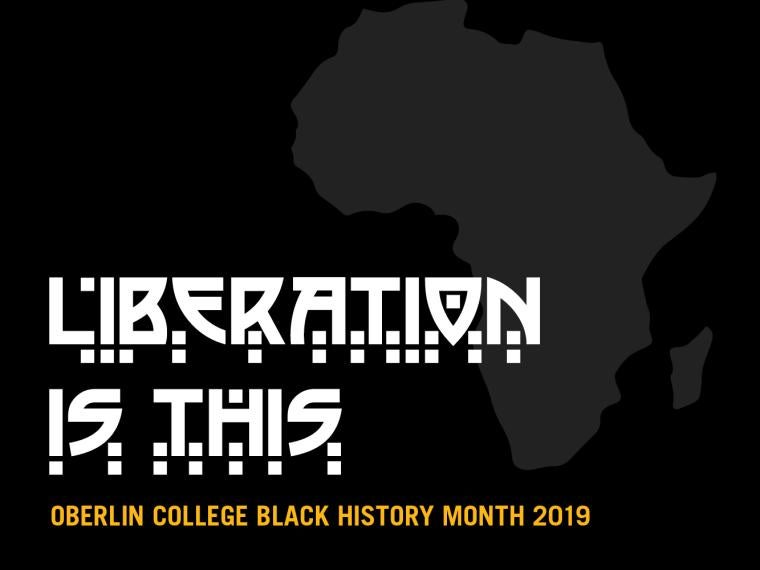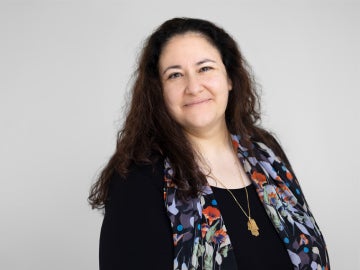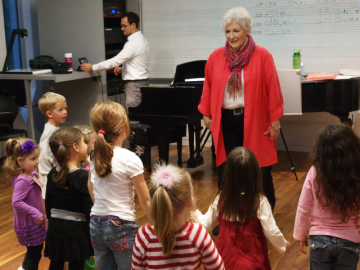Campus News
Black History Month 2019: Liberation is This
February 7, 2019
Communications Staff

The monthlong tribute, themed Liberation is This, includes 26 programs, performances, and talks that shine a light on the black experience.
Learning about black history is a force of liberation and illumination. This sentiment serves as the inspiration for this year’s Black History Month theme, Liberation is This.
Candice Raynor, chair of the Black History Month Committee and director and faculty in residence of the Afrikan Heritage House, says the act of gathering together to celebrate and learn during Black History Month is, quite literally, liberating. “It’s liberating on many levels for the black community. Especially when you consider how much of our history and achievements are left out of textbooks and curriculums. Learning about ourselves and celebrating who we are and how far we’ve come is liberating,” says Raynor.
A selection of 26 speakers, performances, and other events highlights black history through music, fashion, film, dance, theater, prose, and sport. The breadth of programming across disciplines covers various aspects of black history.
Returning for a second year as a part of the celebration is the Moses Hogan Sing-Along. Led by third year DaQuan Williams and taking place on February 12, this program features the legacy of world-renowned pianist, composer, arranger, and Oberlin alumnus Moses Hogan. The program is tied to a larger desire to bring forward black history in the conservatory. “This event encourages people from different musical upbringings to engage with the choral genre of Negro Spirituals (or African-American Spirituals),” says Williams. “The hope is that by the end of the program, those who were previously unfamiliar with Hogan and his arrangements of Negro spirituals learn what it takes to successfully rehearse and perform his work.”
This year’s annual ball takes the form of a masquerade. Themed Carnivale, the event on February 16 serves as a celebration of carnival culture across the African diaspora. Coordinated by the African Student Association and Students of Caribbean Ancestry, all are encouraged to come in carnival-inspired costumes. During the week of the ball, Associate Professor of Africana Studies and Comparative American Studies Meredith Gadsby will give a talk titled “Are You Ready for This: Consent and Women’s Agency in Carnival Culture” exploring consent and sexuality in the context of Carnival traditions in the Eastern Caribbean and Caribbean diaspora.
Another feature is the Greg Tate Residency taking place February 18-20. Tate, a writer, musician, and cultural provocateur, will lead a series of talks over three days. “The discussion on Tom Wilson is one not to be missed,” says Assistant Professor of Ethnomusicology Kathryn Metz. In the program, Tate and Craig Street, a GRAMMY award-winning producer, will dig deep into Wilson's career and signature sound that created some of the most recognizable songs of the 1960s. The Marginalized Voices in Music Journalism Panel will include discussions on how the history of popular music has been shaped to an extent by its critics, most of whom are cisgender white males. Metz describes the ConFab Listening Party on February 19 as “crate-digging for music fans.” Says Metz: “Tate has a wealth of musical knowledge and incredible taste that is hard to beat.”
Other events this month include performances of What We Look Like, a play written by BJ Tindal ’16 and directed by Caroline Jackson-Smith; a community-wide, three-on-three basketball tournament; a screening of Tongues Untied at the Apollo Theater; Melanin Mondays at The ’Sco; and a series of presentations on careers in the sciences during the two-day summit, STEM in Color.
Raynor stresses that these programs are open to and accessible for all. “[Black History Month] is also intended to be liberating and transformational for those who aren’t part of the black community,” says Raynor. “This month is for all of us.”
More about Black History Month programming can be found on the Black History Month webpage and on the event poster.
You may also like…
Remembering Former Visiting Assistant Professor Leila Ben-Nasr
Leila Ben-Nasr, a former visiting assistant professor of comparative American studies, died on November 28, 2025.
Oberlin Community Remembers a Beloved Retired Professor
A member of Oberlin faculty for 13 years, Peggy Bennett was known by students and the Oberlin community for creating and leading MusicPlay, a preschool classroom and learning lab run as part of the...
Eric Rooks Named Director of Campus Safety at Oberlin
Longtime public servant emphasizes collaborative partnerships and kindness.


